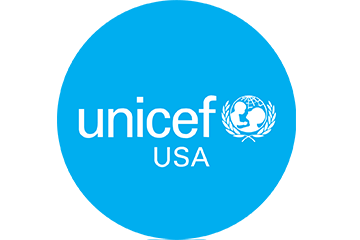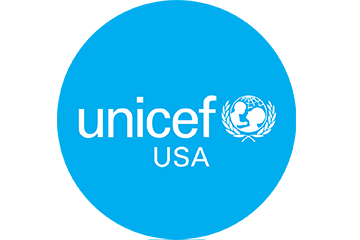Millions of children are on the move.
Like the more than 2.5 million children who’ve fled Ukraine, some escaped their homes with no more than the clothes on their backs. On their journeys, they can be separated from their families, face a heightened risk of human trafficking and exploitation and miss out on an education — challenges that leave lasting physical and psychological effects.
It doesn’t have to be this way. UNICEF works around the world to address the refugee crisis and protect every child on the move. From Ukraine and its bordering countries to Yemen and Afghanistan, teams deliver lifesaving care in refugee and displacement camps and provide child-friendly spaces so children can play and reunite with their families.
Yemen
Eight years into the conflict in Yemen, 20.7 million people need humanitarian assistance with over 50 districts across the nation impacted by fighting on the frontlines. The violence has displaced over 4.2 million people, of which 79 percent have been children and women.
Three-year-old Khalid, above, has been living for five years with her parents in the Al-jufainah camp for displaced people located in Yemen’s Marib governorate. Marib hosts 60 percent of all Yemeni refugees and asylum-seekers who fled the militias that turned Yemen into the world’s largest humanitarian crises.
UNICEF’s humanitarian focus in Yemen is on providing lifesaving assistance while strengthening the war-torn nation’s infrastructure and systems so they can withstand present and future shocks. With the nation’s acute malnutrition at severe levels, UNICEF is working hard to provide the nutritional support and treatment needed to spare children the threat of lifelong consequences.
Syria
Syria’s decade-plus conflict has inflicted scars on its children that are likely to become permanent. Some 6.5 million need help now, the greatest number recorded since the crisis began 11 years ago. Hasan, 6, seen above with his cousins Mohammad, 8, Ahmad, 7, and Sham, 6, now lives in rural Damascus with his family. After fleeing violence in northeast Syria, Hasan and his family have suffered five long years of displacement and poverty. Syria’s continuing economic deterioration has only made their situation worse.
It’s not just the children like Hasan who live in Syria who suffer. The instability, poverty and hardship plaguing neighboring countries where Syrian families have fled, have left 5.8 million more children reliant on humanitarian aid.
UNICEF has worked tirelessly since the conflict began to protect Syria’s displaced and refugee children. Last year, UNICEF Jordan and its partners provided cash grants to nearly 350,000 households, improving the lives of 640,000 children. In Iraq, which hosts 260,000 Syrian refugees, UNICEF also helped vaccinate Syrian children under 5 against polio.
In 2022, UNICEF is continuing to give Syrian children, wherever they may be, the safe water, health care, nutrition, education and protection they need to stay healthy and hopeful.
Bangladesh
In 2017, violence and persecution drove 30-year-old Rubina (above with her baby Rijuwan) and over 1 million other Rohingya refugees from their homes in Myanmar. Ninety percent sought sanctuary in Bangladesh and Malaysia, where they’ve struggled long and hard to start over and support themselves and their families. Many Rohingya refugees are women and children who live in Bangladesh’s Cox’s Bazar, the world’s largest refugee settlement.
Since the crisis began, UNICEF has been working in Cox’s Bazar to provide lifesaving support and protection, services that proved critical over the past year when Rijuwan became severely acutely malnourished. UNICEF has established nutrition centers in the settlement, and thanks to the treatment Rijuwan received at one the 10-month-old is recovering. In addition to nutritional support, UNICEF also provides health care, safe water and a mammoth education operation, which served 300,000 children in 2021.
Venezuela
Violence, insecurity and extreme poverty have forced millions of Venezuelans to flee their homes for countries within Latin America and the Caribbean, many searching for food and other essential services.
Over the past five years, the number of Venezuelan migrants in Colombia, where the little girl above landed with her family, has risen more than 3,000 percent — from 53,747 in 2016 to 1,842,390 in 2021. Last year, after Columbia granted temporary protection status for Venezuelan migrants living there, UNICEF Columbia supported Migracion Columbia in registering more than 850,000 Venezuelans, with a priority on children under seven.
The refugee and displacement crisis is upending children’s lives — but we can make a difference. In addition to actively reaching children on the move, UNICEF is acting to address the causes of this issue. Through initiatives and global advocacy, UNICEF is increasing access to education, strengthening child protection and social safety nets, and calling for conflict resolution so children never become refugees in the first place.
In honor of World Refugee Day, support UNICEF’s work and help extend even more critical humanitarian care and support to children.
Top photo: On 7 April 2022 in Lviv, western Ukraine, a group of relatives and family friends of women and children who have been separated from their husbands and fathers take a bus to the border with Poland, after traveling on an evacuation train from the southern port city of Odesa. © UNICEF/UN0623984/Modola; © UNICEF/UN0645407/Souleiman; © UNICEF/UN0438031/ Sifontes





